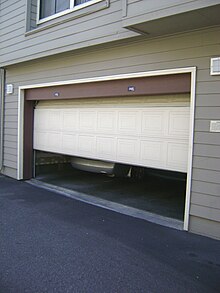Once a door is selected, their team handles the full installation, from removing the old unit to aligning and securing the new one. The result is a professionally installed garage door that functions smoothly and enhances curb appeal. In addition to doors themselves, garage door openers are an important part of the service package. Whether the opener has stopped responding, is producing unusual sounds, or needs to be replaced due to age, C&C provides repair and replacement services for all major opener brands. New openers are available with features such as smartphone control, automatic lighting, quiet operation, and backup battery systems. These upgrades add convenience, improve accessibility, and enhance the overall function of the garage door system. Garage door repair in Jefferson, GA also includes correcting issues with other hardware components. Damaged rollers, bent tracks, misaligned sensors, and worn-out hinges can cause significant disruptions to door performance. C&C Garage Door & Opener repairs or replaces these components as needed.
If individual panels are cracked or dented due to accidental impact or weather exposure, the company can often replace those sections without requiring a full door change. This targeted approach saves customers time and money while restoring the door's structure and appearance. Preventive maintenance is also part of the company's service model. C&C offers routine maintenance to help keep doors running smoothly and reduce the chance of emergency repairs. During maintenance visits, technicians check door balance, lubricate moving parts, inspect springs and cables, and make adjustments as necessary. Homeowners benefit from improved safety, better performance, and extended equipment life when maintenance is performed regularly. Clients seeking garage door installation in Jefferson, GA also appreciate C&C's attention to customer preferences.
Garage Door Replacement Doors Jefferson GA - Adairsville
- Jefferson
- Riverdale
- Maxeys
Their goal is to ensure the new door matches the home's style while delivering the function the customer expects.
Garage Door Replacement Doors Jefferson GA - Covington
- Pisgah Forest
- Greensboro
- Dunwoody
Garage Door Replacement Doors Jefferson GA - Covington
- automobile repair shop
- Covington
- Adairsville
For those planning a full replacement or a fresh install, garage door installation in Jefferson, GA with C&C Garage Door & Opener is a seamless process. Their installation team ensures accurate measurements, proper hardware selection, and thorough testing before completion. Once installed, the new door is tested for smooth operation and reviewed with the customer to ensure satisfaction with both the product and the installation experience. C&C also offers service in surrounding areas including Lawrenceville, Buford, Duluth, Hoschton, and Braselton, among others. Whether it's an emergency repair or a planned upgrade, C&C brings consistent quality and technical knowledge to every job. Customers can reach out by phone or email to request a quote, ask questions, or schedule service. C&C Garage Door & Opener continues to be a top-rated choice for garage door repair in Jefferson, GA and garage door installation in Jefferson, GA. With responsive service, experienced technicians, and a strong local reputation, the company remains focused on delivering dependable results and long-term customer satisfaction.










